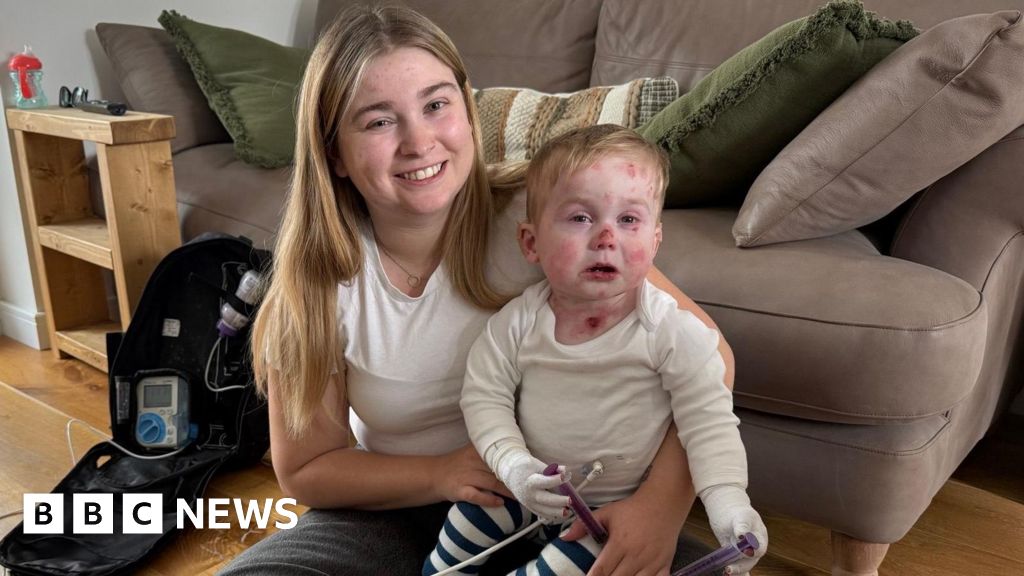Eli Lilly's Experimental Obesity Pill Shows Promising Results in Late-Stage Trials

A prominent sign featuring the Eli Lilly logo stands outside the company's headquarters in Indianapolis, Indiana, captured on March 17, 2024. In a noteworthy development for the pharmaceutical world, Eli Lilly announced on Thursday that its oral obesity medication, orforglipron, successfully met its objectives in the initial phases of several late-stage clinical trials. The findings indicate that the pill not only assists patients with Type 2 diabetes in effectively lowering their blood sugar levels but also aids in reducing body weight, demonstrating a safety profile comparable to popular injectable medications currently available in the market.
These trial outcomes rank among the most closely monitored studies in the pharmaceutical industry this year, marking a significant step forward for Eli Lillys innovative pill. The experimental drug orforglipron is positioned to be a game-changer in the rapidly expanding weight loss and diabetes management market, primarily because it offers a needle-free alternative to conventional treatments. This convenience, combined with an easier manufacturing process, could provide Eli Lilly with a competitive advantage over its rivals, including Novo Nordisk, as they all vie for a share of this lucrative sector.
The data regarding weight loss from the trials, along with observations on the frequency of side effects and treatment discontinuations, aligned closely with expectations set by Wall Street analysts. Interestingly, however, orforglipron fell short of some analysts projections regarding a critical diabetes measurement.
The highest dosage of orforglipron resulted in an average weight loss of approximately 7.9%equating to around 16 poundsafter a span of 40 weeks. Notably, Eli Lilly reported that participants did not experience a plateau in their weight loss by the end of the study, suggesting that further weight loss could potentially occur beyond the trial period.
Prior research involving both the orforglipron pill and existing injectable treatments has highlighted a trend where diabetes patients tend to experience less weight loss compared to non-diabetic individuals. This discrepancy presents challenges when attempting to compare the efficacy of this medication with drugs specifically designed for obesity management.
Regarding side effects, around 8% of patients receiving the highest dose of the pill discontinued treatment due to adverse reactions, primarily gastrointestinal, which included nausea and vomiting. The severity of these side effects was classified as mild to moderate. Specifically, 14% of participants experienced vomiting, while the rates of nausea and diarrhea were recorded at 16% and 26%, respectively.
Earlier this month, analysts from TD Cowen projected a discontinuation rate of 9%, suggesting that orforglipron might have a slightly higher incidence of side effects compared to injectable alternatives, given that it requires daily administration as opposed to a weekly injection schedule.
Despite these findings, the pill did not fully meet some analysts' expectations for another critical diabetes metric. It resulted in a reduction of hemoglobin A1can essential marker for blood sugar levelsby an average range of 1.3% to 1.6% across various doses over the 40-week period, starting from a baseline level of 8%. For comparison, patients taking a placebo experienced only a 0.1% reduction during the same timeframe.
Some analysts had anticipated a more significant reduction, estimating between 1.8% to 2.1%, which aligns more closely with the results seen in diabetes patients treated with Novo Nordisk's injection, Ozempic.
Nonetheless, Eli Lilly's CEO, David Ricks, expressed satisfaction with the latest results, stating, We are pleased to see that our latest incretin medicine meets our expectations for safety and tolerability, glucose control, and weight loss. We look forward to additional data readouts later this year. Incretin medications function by mimicking specific gut hormones that suppress appetite and help regulate blood sugar levels.
The company is currently conducting seven late-stage studies on orforglipron, which includes five focused on diabetes and two targeting obesity. Eli Lilly anticipates filing for regulatory approval for the obesity indication by the end of this year and aims for diabetes approval by 2026.
If orforglipron secures approval, it has the potential to broaden access to effective treatments for many patients and help mitigate the ongoing supply shortages of existing popular injectable medications. Ricks emphasized that the pill could be readily manufactured and launched at scale for use by people around the world, which could greatly enhance treatment access.
Moreover, the successful rollout of this pill could enable Eli Lilly to fortify its standing in a burgeoning market, especially as various other pharmaceutical companies race to introduce competing products. As the first oral variant of a so-called GLP-1 medication, Eli Lilly stands to capture a substantial portion of the market for this highly sought-after class of weight loss and diabetes drugs. Analysts have noted that Eli Lilly is currently approximately three years ahead of its competitors in developing similar oral medications, which include AstraZeneca, Roche, Structure Therapeutics, and Viking Therapeutics.
Looking ahead, some analysts project that the market for GLP-1 medications could exceed $150 billion annually by the early 2030s, with oral GLP-1s potentially accounting for about $50 billion of that figure. Eli Lillys orforglipron pill functions similarly to existing medications like Wegovy, Ozempic, and Novo Nordisk's diabetes drug Rybelsus, all of which target the GLP-1 gut hormone to manage appetite and blood sugar levels effectively.
However, a distinguishing characteristic of Eli Lillys pill is that it is not classified as a peptide medication, allowing it to be absorbed more efficiently within the body and eliminating the dietary restrictions that accompany Rybelsus treatment.




















